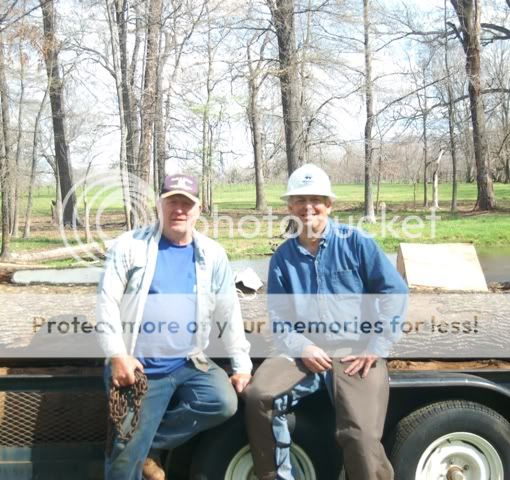Cody Colston
ArboristSite Member
when you combine a novice faller with a slightly-leaning Oak in 20-30 mph winds.

I think it was the third tree I cut. On the only other leaner, which was a much bigger tree, I used a bore cut.
My friend (him on the left, me on the right in following Pic) has a bunch of dead Oaks following last summer's severe drought and asked me if I wanted to harvest some of them before they rotted. I'm always on the lookout for free logs so we spent a day cutting.
I was wary of that particular tree from the get-go and got well clear when I heard the first crack. Perhaps I could have saved it by chasing the hinge but there were lots of other dead trees and I didn't see the value in taking a risk for just one.
I like to think that some of what I have read here helped me with the falling. I didn't try to swing the trees to any particular lay, just primarily fall with the lean. I'd fall and buck one and my friend would move the logs out with his tractor. We worked from inside-out on that particular stand of Oaks to prevent a "jackstrawed mess." There was no hurry, just a couple of 60 year old lifelong friends enjoying the process.
Neither of us got hurt and we had a pretty respectable stack of logs at the end of the day. I hauled five Post Oak logs home for milling into lumber. I also came home with even more respect for you guys that do this for a living. It was a whole lot like work.


I think it was the third tree I cut. On the only other leaner, which was a much bigger tree, I used a bore cut.
My friend (him on the left, me on the right in following Pic) has a bunch of dead Oaks following last summer's severe drought and asked me if I wanted to harvest some of them before they rotted. I'm always on the lookout for free logs so we spent a day cutting.
I was wary of that particular tree from the get-go and got well clear when I heard the first crack. Perhaps I could have saved it by chasing the hinge but there were lots of other dead trees and I didn't see the value in taking a risk for just one.
I like to think that some of what I have read here helped me with the falling. I didn't try to swing the trees to any particular lay, just primarily fall with the lean. I'd fall and buck one and my friend would move the logs out with his tractor. We worked from inside-out on that particular stand of Oaks to prevent a "jackstrawed mess." There was no hurry, just a couple of 60 year old lifelong friends enjoying the process.
Neither of us got hurt and we had a pretty respectable stack of logs at the end of the day. I hauled five Post Oak logs home for milling into lumber. I also came home with even more respect for you guys that do this for a living. It was a whole lot like work.





